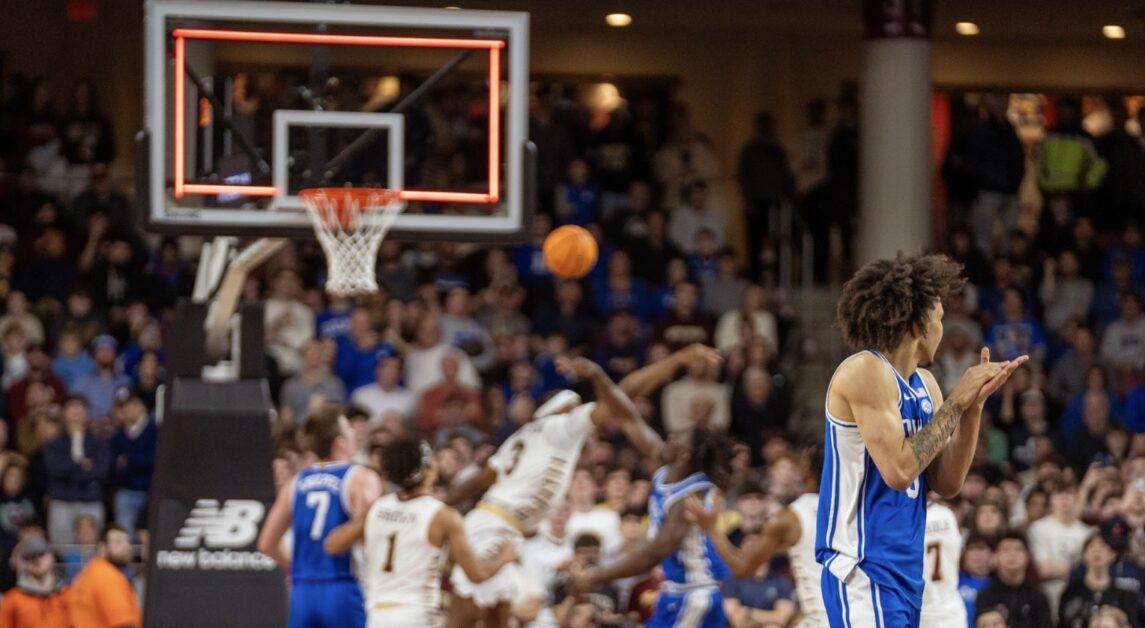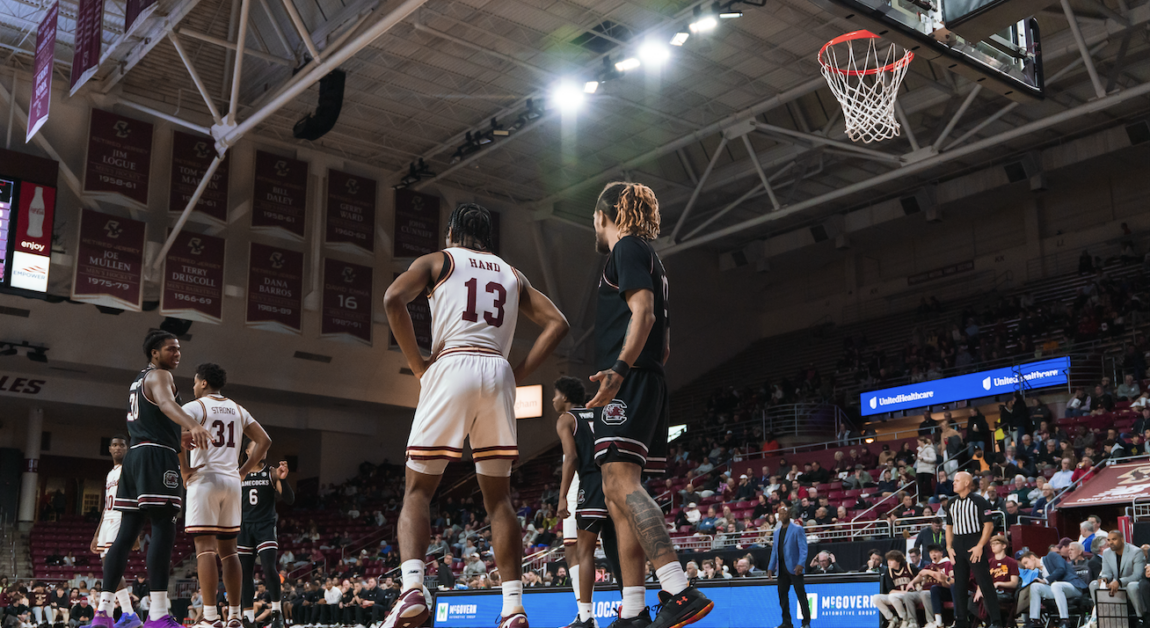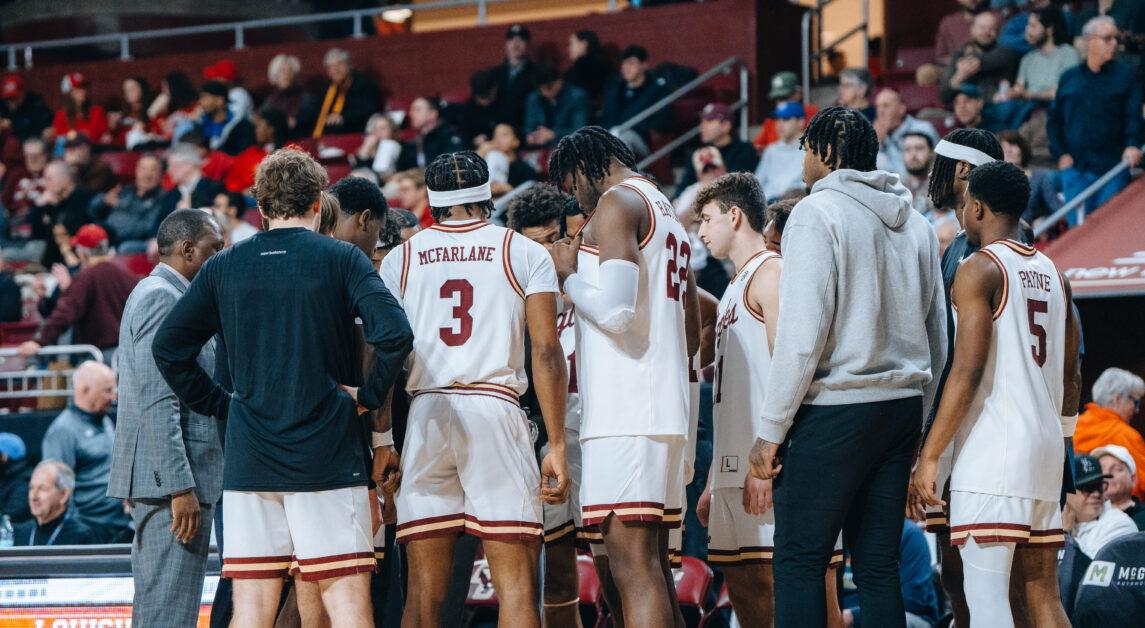A Graphical Breakdown Of How BC Kept Pace With Virginia Saturday Afternoon
With Conte Forum packed like never before this season in eager anticipation of a matchup with the No. 2 University of Virginia Cavaliers, the Boston College men’s basketball team delivered perhaps its most impressive performance of the season.
Despite falling to the Cavaliers 66-51, the game was much closer than the final score indicated. The Eagles ultimately worked their way to a 38-33 lead, keeping the score within five points until the final five minutes of the game, when UVA went on an 11-0 run to put it away.
That the ACC cellar dwellers proved such a stiff test for Tony Bennett’s squad pleasantly surprised the home crowd, with even Coach Jim Christian admitting he was pleased with the effort despite the loss. That being said, delving a little closer into the game and the statistics provides a two major reasons for how the scrappy Eagles managed to hang with the class of the ACC.
Taking Advantage of What the Defense Gives You
On the surface, that statement seems perplexing, given that UVA ranks first in the country in points allowed per game (50.4) and third in adjusted defensive efficiency (AdjD, 85.7) behind the famed pack-line defense, brought to promise by Bennett’s father, Dick, in the 1990s.
Like any defensive scheme, however, even the elite pack-line has a few weaknesses. It is particularly vulnerable to quick ball movement that results in 3-pointers, as the scheme calls for the four defenders not on the ball to sink a full step inside the arc to wall off the paint. In addition, the system aggressively traps pick and rolls, with both defenders involved forcing the handler away from the screen.
This leaves the screener temporarily open while the defense rotates. If that man is capable of knocking down threes and driving past the closeout to the rim, and the handler can make quick decisions with the ball, he can make the defense pay.

Up until midway through the second half, the Eagles exploited this weakness excellently. The team ran numerous pick and rolls with Olivier Hanlan, Dennis Clifford, and Patrick Heckmann. With the trapping defense, Hanlan shifted into facilitator mode, racking up six assists in the game’s first 25 minutes. His ball movement was excellent, allowing the Eagles to take advantage of the momentary 4-on-3 the traps caused.
When facing the double team, he unloaded the ball to his teammates without pause, preventing the pack-line from getting back into position.
The real beneficiary of Hanlan’s unselfishness was Heckmann, the team’s jack-of-all-trades stretch four. The German senior was often given the ball just outside the arc, with his defender, a slower power forward, racing back to pick him up.
Given that space, he changed the game, drilling two 3-pointers and driving into the paint for several layups and passes under the hoop to Clifford. Reserve forward Will Magarity also chipped in, showcasing his improved range with two-first half threes, pacing the Eagles to 40 percent shooting from downtown in the first half, much higher than the UVA defense’s season average of 31 percent.
BC’s strategy was not as effective down the stretch, however, as Tony Bennett used Evan Nolte, a more mobile big man, to guard Heckmann for most of the final 10 minutes. Without the space he found earlier, Heckmann could not make the same impact.
Protecting the Paint, Keeping UVA Off the Line and Contesting Threes
While its defense is highlighted in almost all of the team’s media coverage, the sneaky truth is that UVA also possesses one of the best offenses in the entire country. This may seem strange to casual observers who watch the team’s methodical approach and its repetitive and predictable screening and ball movement.
UVA, however, ranks 349th out of 351 NCAA teams in possessions per 40 minutes with just 58.8 opportunities per game, according to renowned stats guru Ken Pomeroy. This methodical and boring offense produces some excellent results: 48.5 percent from the field (25th in NCAA) and 39.8 percent from deep (16th in NCAA).
Based on this, Pomeroy’s adjusted offensive efficiency metric (AdjO), which measures the points a team scores per 100 possessions adjusted to their opponents, pegs the Cavs as the fourth best offense in the nation (120.0).
With this new appreciation for the UVA offense, the difficulty of the Eagles’ defensive work in the game can also be more fully appreciated. The Cavs score an average of 31 points per game in the paint, led by post behemoth Anthony Gill and a slew of others who get easy points down low. The Eagles, behind excellent perimeter defense and their anchor, Clifford, conceded only 18 points in the paint, despite allowing 13 offensive rebounds.

Next, as with any team that dominates the paint, UVA adds to its compilation of easy points from the free throw line. Before exhaustion set in, with BC allowing 13 free throw attempts in the final seven minutes, Christian’s men put UVA to the line only eight times over the game’s first 33 minutes. Finally, the Eagles held UVA to 6-of-18 from the 3-point line, just 33 percent and well below its season average. Hanlan, Aaron Brown, and Dimitri Batten hounded the Cavs’ perimeter players all game, denying any looks from beyond the arc.
The most impressive part of the defensive showing was BC’s work on Justin Anderson. Entering the game, the Cavs’ leading scorer was shooting a scintillating 55.7 percent on four and a half 3-point attempts per contest.
In Saturday’s game, however, he went 0-for-4 from deep and 0-for-8 from the field. Buoyed by these specific defensive factors, the Eagles managed to make what was predicted to be a blowout into a hard fought contest, in which UVA’s experienced core had to dig deep in order to pull out the win, realizing nothing came easy on Saturday.
Featured Image by Arthur Bailin / Heights Editor



















